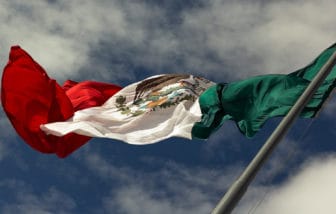COMMENTARY: As a frequent visitor to Mexico, I have endured my share of earthquakes and tremblers. In some parts of the country, small earth movements are so common they’re accepted as part of daily life. Fortunately, the ones I’ve experienced haven’t caused much damage and played out with the people around me spilling into the streets to wait nervously until it felt safe to go back inside.
Tuesday was different. In an eerie replay, the magnitude 7.1 quake that struck southeast of Mexico City and rolled up buildings in the capital city and nearby areas recalled the 1985 disaster that happened on the very same day, Sept. 19, and killed anywhere from 3,200 to 25,000 people, according to different estimates.
Both events happened three days after Mexico’s Sept. 16 independence holiday, a date still honored in some parts of the United States as well. Unlike the tragedy 32 years ago, a barrage of Internet-zipped images, sounds and stories — the stuff that gives a faraway observer a real sensation and appreciation of the scope of disaster — circulated around the world in real time.
Videos of spontaneous rescues, audios of screaming survivors and snapshots of frantic faces electrified Mexican news sites and social media. Instant appeals for help and solidarity were posted. Maps of sites where buildings collapsed could be clicked on and viewed.
Comparing 2017 with 1985, the activist news site Desinformemonos.org noted similarities in the way civil society began mobilizing without waiting for the authorities to arrive.
As of publication, the death toll in Mexico City and several adjacent states was put at more than 200. It was expected to rise as rescue efforts continued. If Tuesday’s afternoon quake had struck in the early morning as in 1985, the death count would surely be much higher.
Worse yet, this week’s earth whammy comes less than two weeks after a shattering quake of magnitude 8.2 killed about 100 people in southern Mexico, mostly in the poor, indigenous state of Oaxaca. On top of torrential rains that have wreaked havoc in parts of the country this month, September 2017 stands as a stark reminder that Mexico is extremely vulnerable to natural disasters, human-caused climate change and the deadly consequences of substandard buildings and inappropriately sited developments.
Sept. 19 is also a milestone in Mexican history because of the political ramifications the ’85 quake had on the nation. Popular outrage boiled at the government’s response to the crisis, with civil society stepping in to fill the vacuum. New mass movements like the garment workers sprung from the rubble of the old Aztec capital, demanding sweeping changes.
“It was a crucial experience for those of us, who as students, lived through the ’85 earthquake. It was in this awakening that we met the face of an active, participatory and critical citizenry,” wrote Cedar Romero and Francisco Medina at Desinformemonos.org. “While the authorities hid and then began to traffic with the aid that arrived from abroad, the risen citizens rescued our city.”
Coupled with discontent over the economy and political corruption, popular revulsion at the long rule of the Institutional Revolutionary Party (PRI) gelled far and wide, even encouraging reformist elements within the party to split off and catalyze the 1988 presidential election crusade of Cuauhtemoc Cardenas, son of perhaps Mexico’s most revered president, Lazaro Cardenas.
Cuauhtemoc lost the election to Carlos Salinas de Gortari, who later became the Mexican midwife of the North American Free Trade Agreement (NAFTA) in a decision many Mexicans claim was a fraud. Yet the dye was cast, and the PRI lost the Congress and Mexico City (Cardenas was elected the first opposition mayor) in 1997, and then the presidency in 2000 to Vicente Fox.
Ironically, on the 32nd anniversary of the 1985 earthquake, when Mexicans were remembering the historic victims of yesteryear in the mist of the morning only to find themselves digging out fresh ones from the rubble of the afternoon, the political and economic landscape of Mexico looks hauntingly similar.
The PRI is in power, people bristle over corruption, and popular dissatisfaction sizzles with the NAFTA-framed political economy. While 1985 was a crisis year in U.S.-Mexico relations, triggered by the scandal over the murder of DEA agent Enrique Camarena in Mexico, 2017 is another time when the diplomatic tone has hit low notes. A volatile element shapes the scene: Narco violence. Pitched battles involving Mexican soldiers, police and private armies erupt with frequency in rural Chihuahua, Guerrero and elsewhere. Violence is making a comeback in Ciudad Juárez, where at least 18 people were murdered in the three days prior to Sept. 19, according to local press accounts.
All this forms the backdrop to the critical Mexican political transition set for next year. And adding to the equation will the public’s perception of the government’s handling of September’s earthquakes, not to mention the hurricanes and floods that could still batter Mexico in the long weeks still remaining in the season. It’s a safe bet that 2018 is going to be a shaky, riveting and perhaps transformative year south of the U.S.-Mexico border.
Kent Paterson is an independent journalist who covers issues in the U.S./Mexico border region. Agree with his opinion? Disagree? NMPolitics.net welcomes your views. Learn about submitting your own commentary here.

